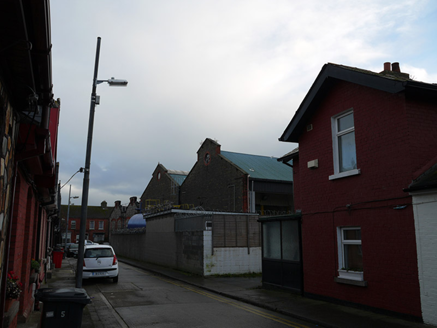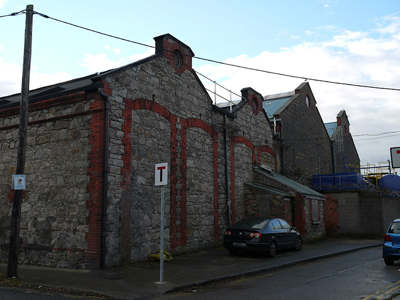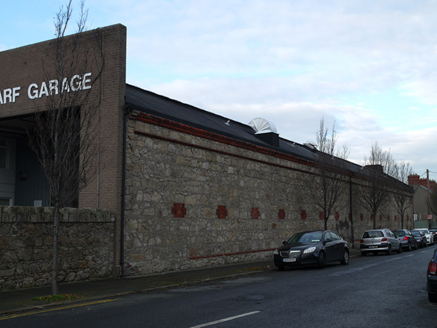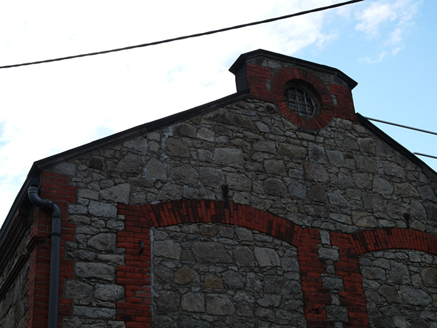Survey Data
Reg No
50030113
Rating
Regional
Categories of Special Interest
Architectural, Historical, Social, Technical
Original Use
Tram shed/depot
In Use As
Bus station
Date
1870 - 1880
Coordinates
320533, 235818
Date Recorded
04/12/2014
Date Updated
--/--/--
Description
Detached multiple-bay double-height single-storey tram depot, built c. 1875, comprising double-pile tram shed with M-profile roof to west, and lower double-pile tram shed with M-profile roof to east having gabled north elevation with single-bay lean-to projection and recent front (south) elevation. Now in use as bus garage. Pitched asphalt and corrugated-sheet metal roof having moulded red brick eaves course to east elevation, verge stones to north gables and recent parapet to front elevation, with some cast-iron rainwater goods. Snecked rubble granite walls having red brick infill, quoins and stringcourse to east elevation and two east bays of north elevation, red brick block-and-start arches set into north elevation. Brown brick walls to two westernmost bays of north elevation, and recent brown brick to front elevation. Oculus openings to rear gables having red brick surrounds and multiple-pane timber windows. Square-headed vehicular openings to west elevation having recent piers and roller shutters. Set back from street and having snecked granite boundary wall to front with granite gate piers.
Appraisal
This former tram shed stands as a reminder of the important role the tramways had on the development of Clontarf. Introduced in 1874, the system was electrified in 1898. Workers commuting to the city and day-trippers visiting the seaside resulted in the Clontarf tram route becoming one of the most profitable for the Dublin United Tramways Company. Tramworkers' cottages, associated with the terminus, were constructed to the north of the site. J.E.V. Vernon granted the land to the DUTC in 1874, on a 99-year lease, to build stables, tram car houses, a forge, harness makers, workmen and labourers' cottages, and buildings for repairing tramway cars according to designs signed off by Thomas Holbrook, a civil engineer. Though altered, this building retains much of its early industrial form and character, particularly in the historic stone masonry and brickwork. In the mid-twentieth century trams were replaced with buses. The last tram travelled to Clontarf in 1941, but this building remains in continued use as a public transport terminus.







